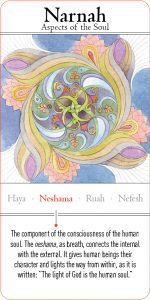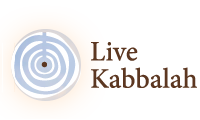Lesson 2 – Part B
The Importance of Knowing Your Goal
 In every field of endeavor that requires a high competitive level, such as sales and sports, the first thing that is taught, is goal setting and the ability to focus on the goal, as a condition for success. Without knowing the goal, we are doomed to wandering through life, aimlessly, with a feeling of despair and being lost. Therefore, in order to succeed in any action or task, first, we have to set and define the goal, the more detailed and precise it is, the greater the chance of success. In general, the majority of people, who set goals, succeed in life, but what does it mean to “succeed in life”? And how does one define the goals that will ensure “success in life”? In fact, many people who look like they have “succeeded in life”, will say “no”, when asked if they feel like they have achieved their goals. It seems that most people don’t consciously set goals for their life and it’s actually rarer still to meet people who have achieved their goals. In conclusion, it is fair to say that most of us just don’t know how to define our purpose/goals accurately and properly
In every field of endeavor that requires a high competitive level, such as sales and sports, the first thing that is taught, is goal setting and the ability to focus on the goal, as a condition for success. Without knowing the goal, we are doomed to wandering through life, aimlessly, with a feeling of despair and being lost. Therefore, in order to succeed in any action or task, first, we have to set and define the goal, the more detailed and precise it is, the greater the chance of success. In general, the majority of people, who set goals, succeed in life, but what does it mean to “succeed in life”? And how does one define the goals that will ensure “success in life”? In fact, many people who look like they have “succeeded in life”, will say “no”, when asked if they feel like they have achieved their goals. It seems that most people don’t consciously set goals for their life and it’s actually rarer still to meet people who have achieved their goals. In conclusion, it is fair to say that most of us just don’t know how to define our purpose/goals accurately and properly
What, then, is the purpose of life?
According to Kabbalah, our purpose in life revolves around our desire to fulfill ourselves in all areas of life, to be more precise –Kabbalah says that the “desire to receive” is the essence of the human being. Where does this “desire”, big or small, come from? Kabbalah explains that the “desire” comes from the soul. Rabbi Ashlag – founder of the modern Kabbalah movement and writer of the “Sulam” (ladder), an interpretation of the Zohar, – explains that the word Neshama (the soul) is defined as; evaluation of size, of the capacity of a vessel, the amount a vessel can hold. Accordingly, the “soul” is a tool that measures/holds the person’s “desire to receive”, big or small.
People with great desires do great things, for better or worse, and people with small desires do little things, for better or worse. The size of the soul determines the power of the individual. Now, if every action we make, everything we do, is with the end goal of receiving for ourselves and fulfilling our desires, then what is that thing that we are trying to receive? How do we know if what we crave is really good for us? This is really important to understand, because no matter what we desire, the ultimate goal is to feel a sense of completion and being full, satisfied on a level that surpasses the realm of immediate gratification. Long term and enduring fulfillment is the goal. This is not as easy as it sounds, as unfortunately, our desires and goals are taken from and influenced by our environment, our physical reality, and any goal that is solely derived from this place, is bound to leave us empty, dissatisfied and leave us with the general feeling that something is missing.
So what are we looking for?
Everyone agrees that when we set ourselves a target, in which we invest energy and time, we expect to feel a good feeling when it’s been achieved. This feeling can be described with words like satisfaction, security, peace, love, fulfillment, strength, power, and more. If we knew at the beginning of a chosen path that those feelings would not materialize, we would probably stop walking the path and stop trying to achieve the goal.
Most people when asked what the purpose of their life is, say that they want to find their destiny, and when asked why, they respond – to attain fulfillment. This is the ultimate feel good goal. So, therefore, the purpose of their life is to feel good and not to find their destiny. Others will say, their purpose is to help others, but also here, it’s not the helping they enjoy, it’s the good feeling they get from helping. Someone else might say he wants to see his kids grown up and settled with a good life, but even here, the real outcome of that goal, are the good feelings that a person feels knowing his kids are in a good place and the hard work of childrearing is completed successfully. Feeling pleasure, love, happiness, joy (just to mention a few) contribute to an incredible sense of fullness, and all of the above emotions cannot be defined or measured by physical means, but what’s important to note, is that all of these feelings are descriptively used when people attempt to define the purpose of life. So what is this sense of fullness?
For many it is not easy to describe, but fortunately anyone can recognize the feeling when he meets it. In fact, it can be described as a sort of spiritual fullness that manifests physically, in many ways. According to studies, people eat less when they are in a mode of creativity, growth, sharing and love as a direct result of the good feeling that fills them up. In contrast, when one feels empty he tries to fill himself with food he doesn’t need or consumes/buys products he doesn’t need. Experience has shown us that such behavior is successful only in the short term. So how do we know when we are really full, full with long term and enduring satisfaction? If we look back and examine the times when we felt this full sensation, we would notice that it was easier to love others; we were happier, felt healthier, were more tolerant of others and felt like we had to share this feeling with others. This is a sure sign that we were tapping into long term, enduring, and spiritual fulfillment.
A Secret Sense of Satisfaction/Fulfillment
So what is this sense of fullness? What is that thing that fills us when we feel fulfillment? Of course, it is not a material thing and the Kabbalists called it “Light”. This is a spiritual light. A spiritual energy and it’s existed since the creation of our world – ” And God said: ‘Let there be light.’ And there was light.” (Genesis 1:3). This is a spiritual light that was created before the physical light (since the sun, the moon and stars were created on the fourth day). Everyone, at one point or another in their life has felt and experienced this light. It’s best described in the following way.
Kabbalists say that one cannot give what he does not have, so when we are full of love and light, it is possible for us to share this with others, we transmit calmness, happiness and joy. The opposite is also true, when we are empty; it is only possible for us to spread sadness and despair. This is then the measure whereby we can know if we are spreading light or darkness. Others will be a mirror for us and give us immediate feedback as to whether they are receiving feelings of love/light from us.
This, therefore, leads to the first Law of Life, according to Kabbalah, the law that defines our purpose in life. What we want is to be filled with Light, an inner spiritual Light. We feel this Light when we are surrounded by love, filled with love and experience satisfaction in our family life and careers. We experience an inner peace, sense of security and tranquility that endures. How do we achieve this and where do we find this “Light”? Answers to these and other burning questions will be found in the next article.
For additional study please enter the Kabbalah Beginners’ Course “Level 1 – The Inner World of the Kabbalist” at Live Kabbalah University.
Lesson 1
Part A
What is Kabbalah?
Part B
The Zohar through History
Part C
Kabbalah’s Influence on the Development of Modern Science
Lesson 2
Reality and Illusion, the True World (Olam HaEmet) vs. The False Reality of the bodily senses and mind.
The Language of Branches – The Special Language of the Kabbalists
The Desire and its Fulfillment
Part A
The Rules of Life
Part B
The Way to Happiness
Part C
Logic as a Barrier
Lesson 3
How did it all begin? The Creation of the Universe, The Source of all Souls, What is every Soul made of?
The Big Bang Theory vs. Rabbi Isaac Luria’s Tsimtsum Theory.
What is the source of Evil in this world? The real motivation of the soul vs. Maslow’s Hierarchy of Needs
Part A
Where do we come from?
Part B
Being a Creator
Lesson 4
Good and Evil, Good Inclination and Evil Inclination: Duality as the Source for the Meaning of Life. Free Will: Logic vs. Faith.
Lesson 5
The Tikun doctrine: How everyday’s life is a mirror of the journey the soul is taking. Why do bad things happen to Good People? The Rules of Cause and Effect, Reincarnation in Kabbalistic Teachings.
Lesson 6
Being a Creator – How to understand feelings and emotions? How can we tell between good and evil? The guidance to define negative emotions and the way to transform them.
Lesson 7
Tools for spiritual change:
- Our community.
- The Hebrew letters as an expression of hidden cosmic forces and invisible frequencies – the building blocks of our reality. The marvelous story of the 72 names of the Creator through the unofficial history of the world.
Lesson 8
Basics in Kabbalistic Meditations.
The Name of 42 Letters, The “Ana VeKho’ah” – one of the major holy metitation in the Jewish mystical world.
Lesson 9
“Ets Ha’Haim” – The Tree of Life, Sefirot and Olamot (Worlds).
How is it that The Creator never changes but it looks like He does?
The Cosmology of Good & Evil
The Tetragrammaton.
Lesson 10
The Myths of Messiah, Resurrection of the Dead and the Hebrew Calendar. Prophets of the end of days according to the Kabbalah and the ability to differ between false believes and a guidance to a better future.
To listen to the lessons above, please enter :Live Kabbalah University.
Kabbalah Level 1 – The Inner World of the Kabbalist
